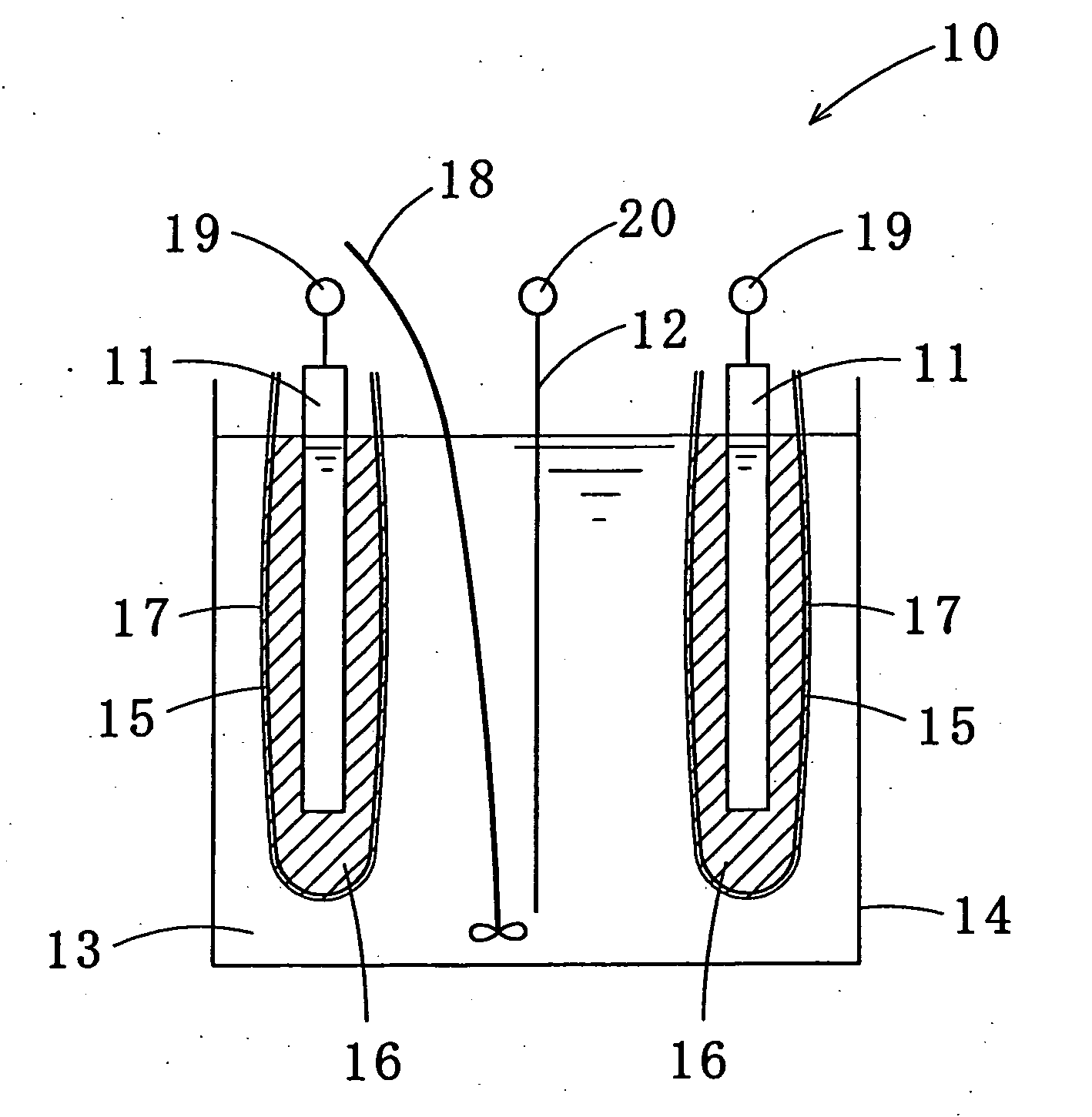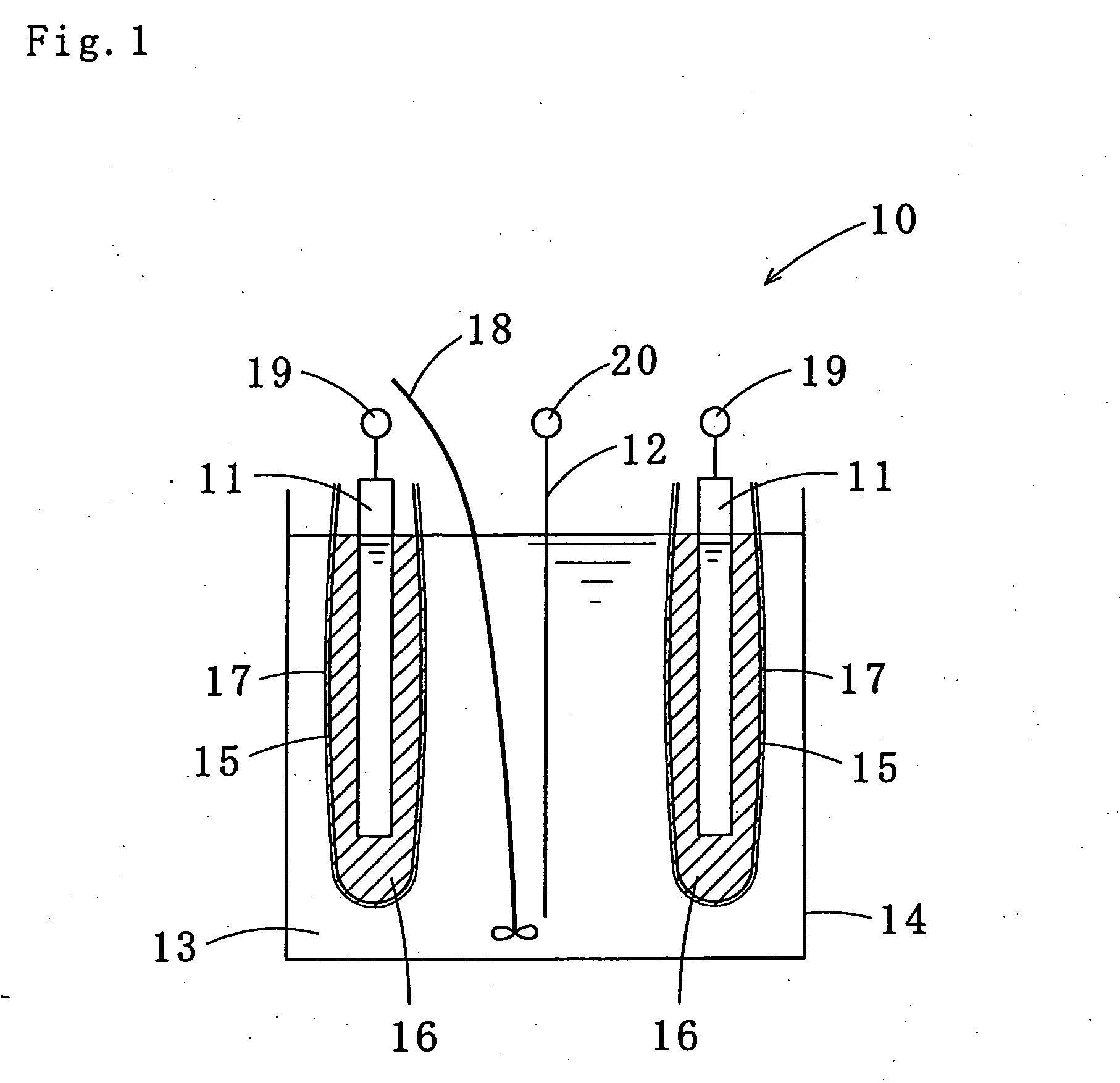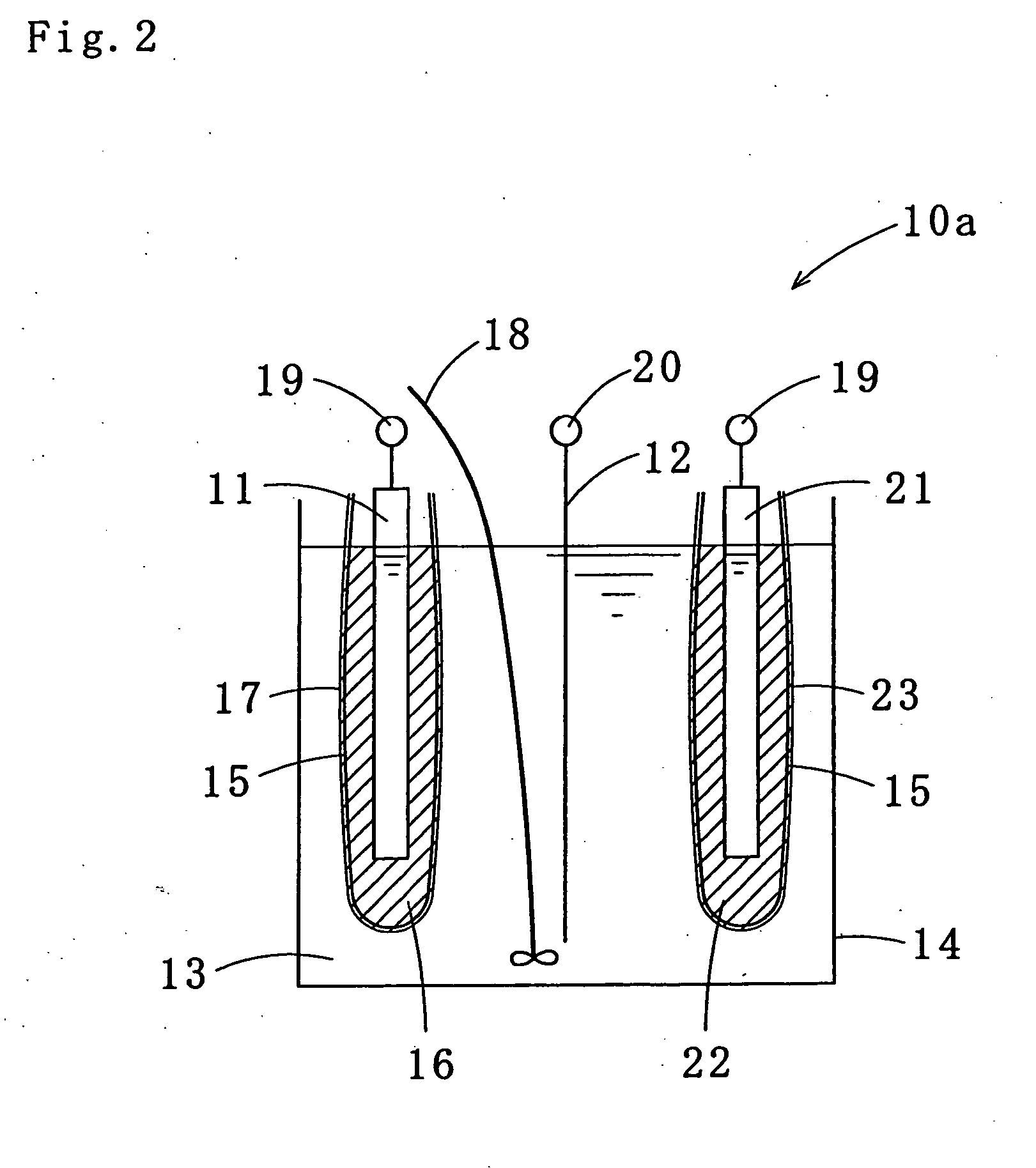Tin-silver-copper plating solution, plating film containing the same, and method for forming the plating film
a technology of silver copper and plating solution, which is applied in the direction of welding/cutting media/materials, manufacturing tools, and so on, can solve the problems of pure tin plating, deterioration of its solderability, and whisker-shaped crystals (whiskers) on the film, so as to achieve the desired conductivity, reduce the heating temperature at the time of mounting, and ensure the effect of high joining strength
- Summary
- Abstract
- Description
- Claims
- Application Information
AI Technical Summary
Benefits of technology
Problems solved by technology
Method used
Image
Examples
experimental examples
[0112] Hereinafter, the present invention will be described more specifically with reference to experimental examples. The scope of the present invention is not limited to the experimental examples as long as it does not exceed the gist of the invention.
[0113] In order to observe effects of the plating solution, the electrolytic plating method, the plating film and the soldering method in accordance with the present invention, experiments were carried out to measure metal content ratios in the plating films, finished appearances and melting points relating to the plating films plated by the electrolytic plating method of the present invention using the plating solution of the present invention. Further, using the plating films, experiments were carried out to measure joining strength and solder wettability of the plating films soldered by applying the reflow soldering system according to one embodiment of the present invention.
[0114] The tin-silver-copper plating solution accordin...
experimental example
“1b”
[0135] A plating was carried out in the same way as that in the experimental example “1a” except the 42-alloy test-piece with area of 0.3 dm2 was replaced with a copper test-piece with area of 0.3 dm2.
[0136] The results are shown in a line of the experimental example “1b” in Table 4. Contents of copper and silver in the plating film were not measured but were estimated to be the approximately same components as those measured in the experimental example “1a”.
[0137] Each result of the tests was approximately same as that in the experimental example “1a” except a great improvement in the joining strength of the test-piece with the copper-coated testing board made from glass epoxy. Also, the appearance was acceptable and the melting point became lower.
experimental example 2
[0138] A plating was carried out in the same way as that in the experimental example “1a” except the density of current with the direct-current waveform was 5.0 A / dm2. Even when the plating was carried out with the changed current density, a surface shape observed with an electron microscope was nearly same as that in the experimental example “1a”. Also, the surface shape being smooth, particles of the surface were uniform-sized without fluctuation.
PUM
| Property | Measurement | Unit |
|---|---|---|
| Temperature | aaaaa | aaaaa |
| Fraction | aaaaa | aaaaa |
| Percent by mass | aaaaa | aaaaa |
Abstract
Description
Claims
Application Information
 Login to View More
Login to View More - R&D
- Intellectual Property
- Life Sciences
- Materials
- Tech Scout
- Unparalleled Data Quality
- Higher Quality Content
- 60% Fewer Hallucinations
Browse by: Latest US Patents, China's latest patents, Technical Efficacy Thesaurus, Application Domain, Technology Topic, Popular Technical Reports.
© 2025 PatSnap. All rights reserved.Legal|Privacy policy|Modern Slavery Act Transparency Statement|Sitemap|About US| Contact US: help@patsnap.com



